How To Use Stroller? A Beginner’s Guide
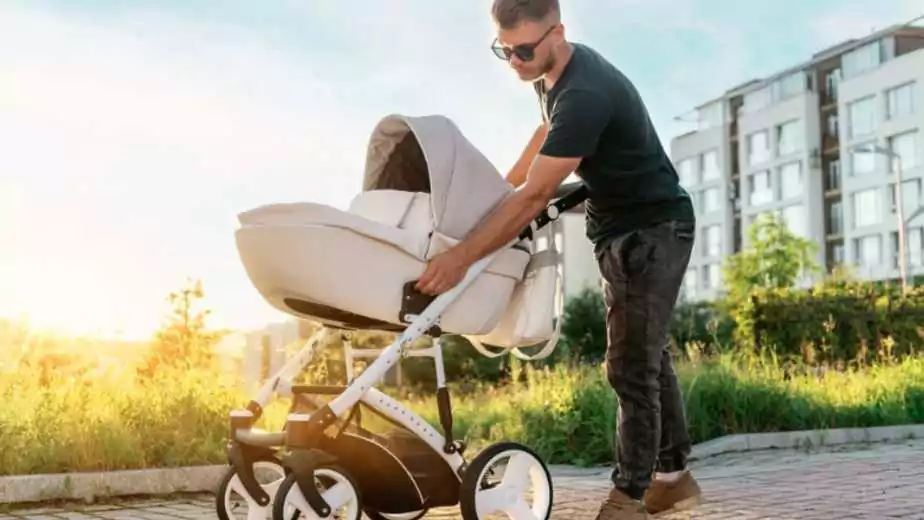
Stepping into parenthood introduces a myriad of new experiences, including the art of choosing and using a stroller. These indispensable parenting tools offer more than just transportation for your little one; they bring ease, safety, and comfort to your family’s daily life. The market is abundant with options: agile umbrella strollers for swift urban jaunts, sturdy jogging strollers for the active parent, and comprehensive travel systems that smoothly transition from car to sidewalk.
This guide is crafted to understand how to use stroller and streamline the stroller selection process for new parents, offering practical advice for safe and effective use. Our goal is to make your outings, whether a tranquil park walk or a hustle through city streets, a delightful and relaxed part of your parenting adventure.
1 Choosing the Right Stroller
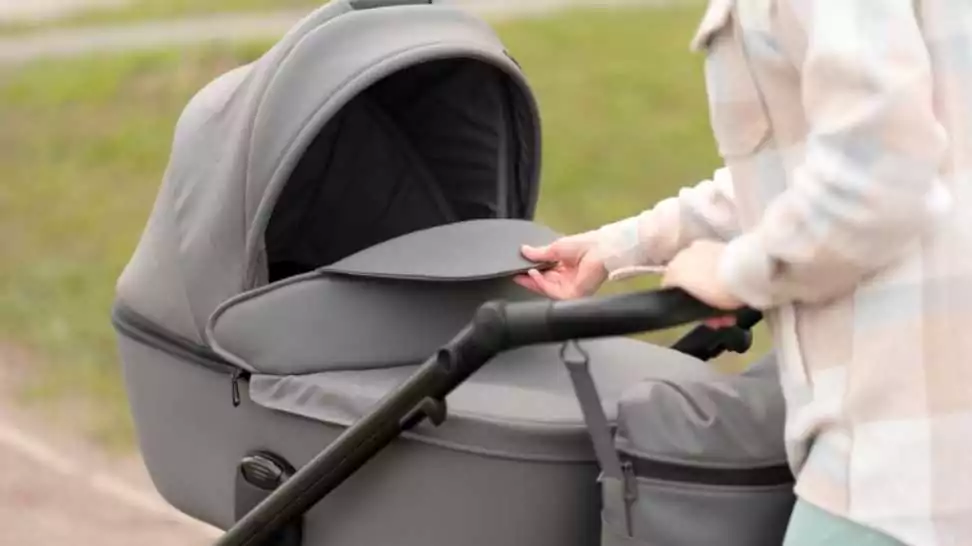
Selecting the perfect stroller is a crucial decision that can significantly impact your daily life with a little one in tow. To ensure you make an informed choice, consider the following factors:
Lifestyle: Your daily activities and environment play a pivotal role in determining the type of stroller you need. If you’re someone who loves jogging or traverses rugged terrains often, a jogging stroller with sturdy wheels and enhanced suspension is ideal. For city dwellers navigating crowded sidewalks and public transport, a lightweight, compact umbrella stroller may be more suitable.
Budget: Strollers come in a wide range of prices, and it’s important to find one that fits your financial plan without compromising on quality and safety. While high-end models offer additional features and premium materials, many affordable options do not skimp on safety or functionality.
Age and Size of Your Child: Newborns require strollers that recline flat, as they can’t hold up their heads. As your child grows, you may prefer a stroller that adapts to their changing size and needs. Consider strollers with adjustable seats or those that convert from a bassinet for infants to a seated position for toddlers.
Pros and Cons of Different Types of Strollers
- Umbrella Strollers: Lightweight and easy to fold, they are perfect for travel and quick trips. However, they may not offer the same level of comfort and support as larger models, especially for newborns.
- Jogging Strollers: Designed with large, air-filled tires and superior suspension for a smooth ride on various terrains. They are bulkier and not as easy to manoeuvre in tight spaces.
- Double Strollers: Essential for twins or siblings close in age. They come in side-by-side or tandem models but can be heavy and challenging to navigate through narrow pathways.
- Travel Systems: These combine a stroller and infant car seat, making transitions from car to stroller convenient. They can be bulky and more expensive than purchasing a stroller and car seat separately.
2 Setting Up Your Stroller
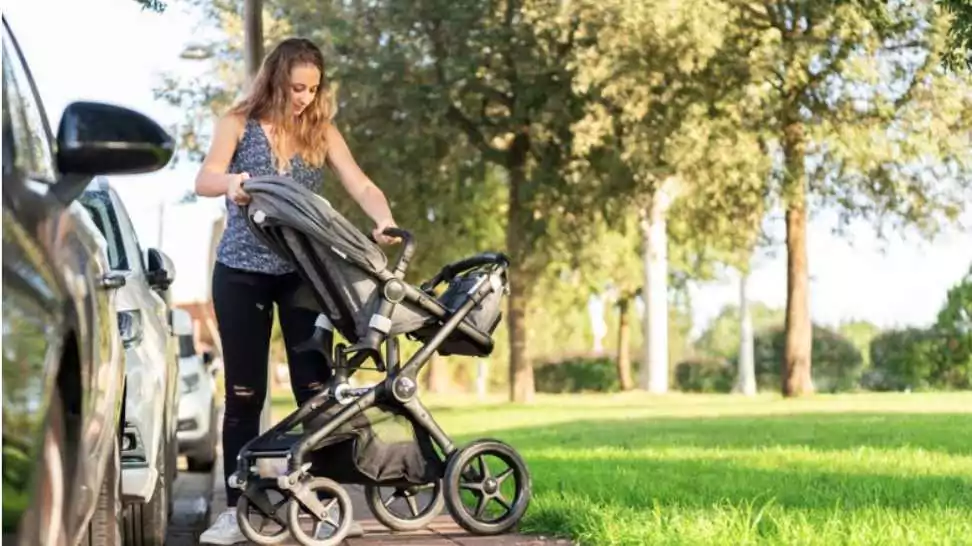
Once you have selected the ideal stroller for your family, the next step is setting it up correctly to ensure maximum safety and comfort for your baby. Here’s a guide to help you through the process:
Step-by-Step Instructions on Assembling a Stroller
- Unbox and Lay Out the Parts: Carefully unbox your stroller and lay out all the parts on a clean surface. Check the instruction manual to ensure all pieces are included.
- Assemble the Frame: Start by unfolding the frame. This usually involves lifting a latch or pushing a button that unlocks the stroller, then pulling up on the handlebar until it clicks into place.
- Attach the Wheels: Most strollers have a simple mechanism for attaching the wheels. Make sure they snap into place securely and check if they need to be inflated (in the case of air-filled tires).
- Install the Seat: Align the seat with the designated slots or connectors on the frame. It should click or lock into place. Ensure it’s facing the desired direction, as some strollers offer reversible seating.
- Add Accessories: Attach any additional components like storage baskets, canopy, or cup holders as per the manufacturer’s instructions.
Important Safety Checks
- Brakes: Test the brakes by applying them and trying to push the stroller. They should lock the wheels firmly in place.
- Harnesses: Ensure the harnesses and buckles work smoothly and can be easily adjusted. A 5-point harness is recommended for maximum safety.
- Stability: Gently push the stroller from various angles to ensure it doesn’t tip over easily. Check for any loose parts or unusual wobbles.
Tips for Adjusting the Stroller to Fit Your Baby's Age and Size
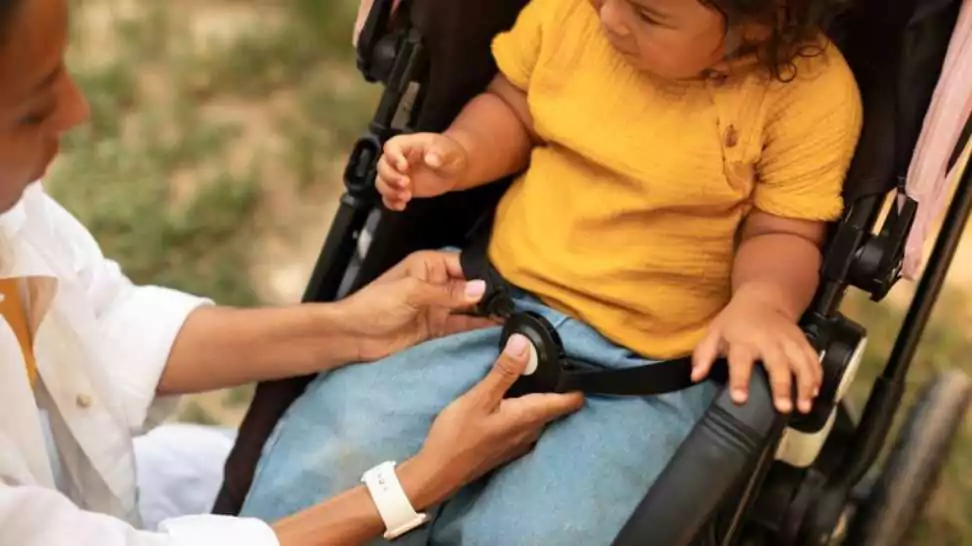
- For Newborns: Use a fully reclining seat position or a bassinet attachment to provide proper support. Ensure that the harness fits snugly around your baby.
- For Infants: As your baby begins to sit up, adjust the seat to a more upright position. Make sure the footrest is accessible if your model has one.
- For Toddlers: Adjust the seat to sit more upright and extend the harnesses as your child grows. Some strollers also allow adjusting the handlebar height, which can be handy for taller toddlers.
3 Safe Stroller Practices
Ensuring your baby’s safety while using a stroller is paramount. Here are detailed guidelines and tips to help you use your stroller safely and confidently in various environments.
Guidelines for Safely Placing Your Baby in the Stroller
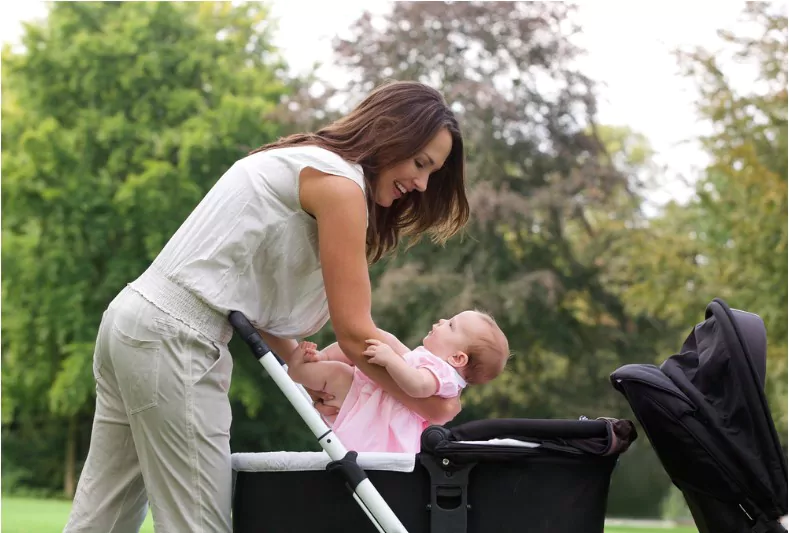
- Before Placing the Baby: Always apply the brakes to stabilize the stroller before placing your baby in it. This prevents any unexpected movement.
- Proper Positioning: Gently place your baby in the stroller, making sure their back is against the seat. For newborns and young infants, use a fully reclined position or a bassinet attachment.
- Use of Infant Inserts: If the stroller is large or your baby is very small, consider using an infant insert for extra support and comfort, ensuring it’s compatible with your stroller model.
Using Stroller Harnesses Correctly
- Securing the Harness: After placing your baby in the stroller, fasten the harness. A 5-point harness that goes over the shoulders, around the waist, and between the legs is ideal for preventing slips and falls.
- Adjusting the Fit: The harness should be snug but comfortable. You should be able to slip a finger between the harness and your baby’s body, ensuring it’s not too tight or too loose.
- Regular Checks: Regularly inspect the harness for any signs of wear and tear and ensure the buckles click securely into place.
Tips for Navigating Different Terrains
Urban Sidewalks: For smooth city surfaces, a stroller with good suspension and lockable front swivel wheels offers better manoeuvrability and control.
Parks and Soft Grounds: Air-filled tires are ideal for grassy or uneven park terrains, providing a smoother ride. Always lock the swivel wheels on rough surfaces for stability.
Rough Surfaces: On rough or uneven surfaces, like cobblestones or gravel, a stroller with larger wheels and robust suspension will navigate more easily and keep your baby comfortable.
Additional Safety Tips
- Never Overload: Avoid hanging heavy bags on the handles as it can tip the stroller. Use the storage basket underneath instead.
- Stay Attentive: Always keep an eye on your baby and the stroller, especially when stationary. Don’t leave the stroller unattended.
- Canopy and Weather Shields: Use the canopy to protect your baby from sun and wind. In case of rain or snow, a weather shield can be very useful.
- Regular Maintenance: Periodically check and maintain the stroller. This includes checking the brakes, wheels, and cleaning fabrics as per the manufacturer’s guidelines.
4 Stroller Maintenance and Care
Proper maintenance and care of your stroller not only ensures the safety and comfort of your child but also extends the life of the stroller. Here are essential tips and solutions for regular maintenance and common issues.

Regular Maintenance Tasks
- Cleaning: Regularly clean the stroller to keep it hygienic and functioning well. Use mild soap and warm water for the fabric parts, and a damp cloth for the frame. Avoid harsh chemicals. Make sure to completely dry the stroller after cleaning to prevent rust or mildew.
- Checking Wheels and Brakes: Inspect the wheels and brakes periodically. Ensure the wheels spin freely and don’t wobble. Check for any wear and tear, especially on the tires of jogging strollers. Test the brakes to ensure they engage properly and hold the stroller stationary when applied.
- Lubricating Moving Parts: Use a suitable lubricant for any squeaky parts or joints. This prevents rusting and ensures smooth operation, especially for folding mechanisms and wheel axles.
Storing Your Stroller to Extend Its Life
- Choose a Dry, Clean Space: Store the stroller in a dry place to prevent rust and mould. Avoid leaving it in direct sunlight for prolonged periods, as this can fade the fabric and weaken plastic parts.
- Fold Properly: Make sure the stroller is folded correctly according to the manufacturer’s instructions to avoid damage to the folding mechanism.
- Keep Away from Heavy Objects: Store the stroller where it won’t be crushed or bent by heavier items.
Dealing with Common Issues
- Stuck Wheels: If wheels are stuck, check for any debris or dirt lodged in them. Clean the wheels thoroughly and lubricate if necessary. For persistent problems, consider replacing the wheels.
- Misaligned Frames: A misaligned frame can make a stroller difficult to push. Check for any loose screws or parts and tighten them. If the frame is bent, contact the manufacturer for repair advice or consider professional repair services.
- Loose or Worn Parts: Regularly check for any loose screws, nuts, or worn parts, and tighten or replace them as needed. Always use manufacturer-approved parts for replacements.
5 Advanced Stroller Features
Modern strollers come equipped with a variety of advanced features designed to enhance convenience, comfort, and adaptability for both parents and children. Understanding these features and knowing when and how to use them can significantly improve your stroller experience.
Overview of Advanced Features in Modern Strollers
- Reversible Seats: Many strollers now offer the option to switch the seat direction, allowing your baby to face you or face forward. This feature is great for engaging with younger babies or allowing older children to explore their surroundings.
- Adjustable Handles: Handles that adjust in height cater to the comfort of parents of different heights. This ergonomic feature can prevent back pain caused by stooping over a stroller that’s too low.
- One-Hand Fold: Some strollers can be folded quickly and easily with one hand, a valuable feature for parents who often find themselves multitasking.
Expandable Canopies: Extra-large or extendable canopies provide better protection against the sun, wind, and light rain, ensuring your baby’s comfort in various weather conditions. - Convertible Design: Convertible strollers can change from a single to a double stroller, accommodating an additional child. This feature is ideal for growing families.
- All-Terrain Wheels and Suspension: Designed for various types of surfaces, these features offer a smoother ride over bumpy paths and are perfect for adventurous families who love the outdoors.
- Built-in Storage Options: Modern strollers often include clever storage solutions like under-seat baskets, parent trays, and child trays, enhancing the convenience of carrying essentials.
When and How to Use These Features Effectively
- Reversible Seats: Use this feature based on your child’s mood and age. Younger infants often prefer facing their parents, while curious toddlers might enjoy looking out at the world.
- Adjustable Handles: Adjust the handle height for the comfort of the person pushing the stroller. This is especially useful if multiple people use the stroller regularly.
- One-Hand Fold: Utilise this feature when you need to quickly fold the stroller while holding your child or when you’re in a hurry.
- Expandable Canopies: Extend the canopy fully during sunny or windy days for maximum protection. Retract it partially or fully when it’s not needed to give your child a better view.
- Convertible Design: This feature comes in handy as your family grows. Start with a single setup and convert to a double when the second child arrives.
- All-Terrain Wheels and Suspension: Use this feature when going off-road or on uneven surfaces like gravel paths, ensuring a smooth ride for your baby.
- Built-in Storage Options: Utilise these for storing baby essentials, shopping items, or personal belongings during outings, making sure not to overload them.

6 Travelling with a Stroller
Travelling with a stroller can be a game-changer for parents on the go, offering a convenient way to keep their child comfortable and secure. Whether navigating busy airports, using public transportation, or embarking on outdoor adventures, here are some valuable tips for travelling efficiently and safely with a stroller.
Tips for Using a Stroller While Travelling
- Airports: Opt for a lightweight, compact stroller that’s easy to fold. Many airports offer gate check services for strollers, allowing you to use them right up until you board the plane. Don’t forget to label your stroller with your contact information.
- Public Transportation: When using buses or trains, a stroller that’s easy to fold and carry is crucial. Be aware of peak hours when public transportation might be crowded, and it might be harder to navigate with a stroller.
- Navigating Crowds: In crowded areas, a smaller stroller can be easier to manoeuvre. Be mindful of the space around you to avoid bumping into others.
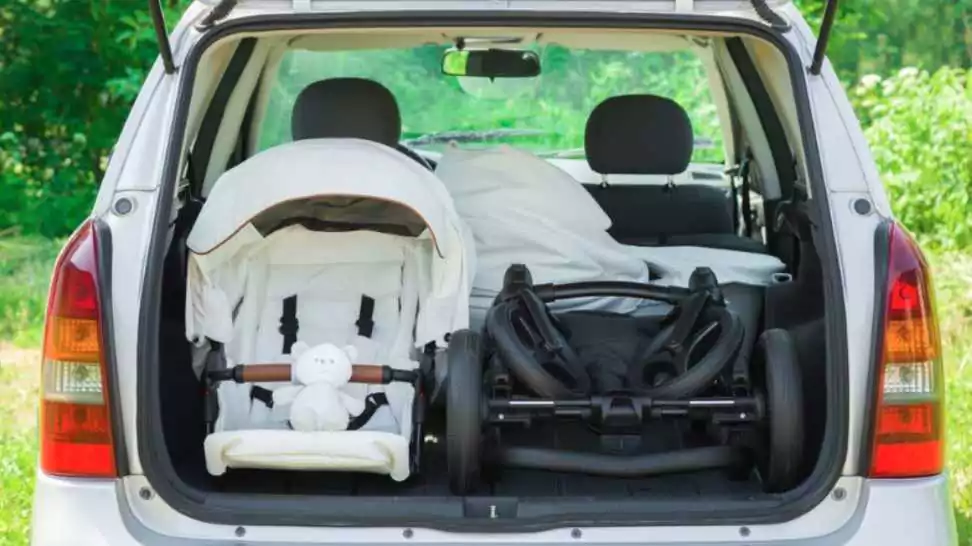
Compact and Travel-Friendly Stroller Options
- Look for strollers specifically designed for travel. These are typically lightweight, have a compact fold, and are easy to carry. Some models even fold small enough to fit into overhead compartments on aeroplanes.
- Features like a carrying strap or bag can make transportation easier. Also, consider how quickly and easily the stroller can be folded and unfolded.
Safety Tips for Outdoor Adventures and Uneven Terrains
- Choose the Right Stroller: For outdoor adventures, a stroller with larger, durable wheels and good suspension is ideal for handling uneven terrains like trails or cobblestone streets.
- Check Weather Conditions: Be prepared for weather changes. Bring along a weather shield for rain or a sunshade for sunny days.
- Packing Essentials: Pack essentials like water, snacks, a first-aid kit, and extra clothing for your baby, depending on the weather and length of your outing.
- Stay Visible: If you’re out in the evening or early morning, attach reflective strips or lights to your stroller to increase visibility.
- Plan Your Route: If possible, plan your route, considering the terrain and availability of paths suitable for strollers.
- Regular Breaks: Take regular breaks, especially on longer walks or hikes, to give your child a chance to stretch and move around.
7 Wrapping Up
As we’ve navigated through the various aspects of selecting, using, and maintaining a stroller, one thing remains clear: the right stroller can significantly enhance the parenting experience. Choosing a stroller that aligns with your lifestyle, budget, and child’s needs, and understanding how to use it safely and effectively, are essential steps in ensuring both your comfort and your baby’s safety.
From the excitement of picking out the first stroller for your newborn to adapting it for a growing toddler, each phase brings its own set of challenges and joys. Remember, a stroller is more than just a convenience; it’s a part of the journey you embark on with your child, filled with discoveries and memories.
Community Q&A
About This Article
This article has been viewed 89 times.



